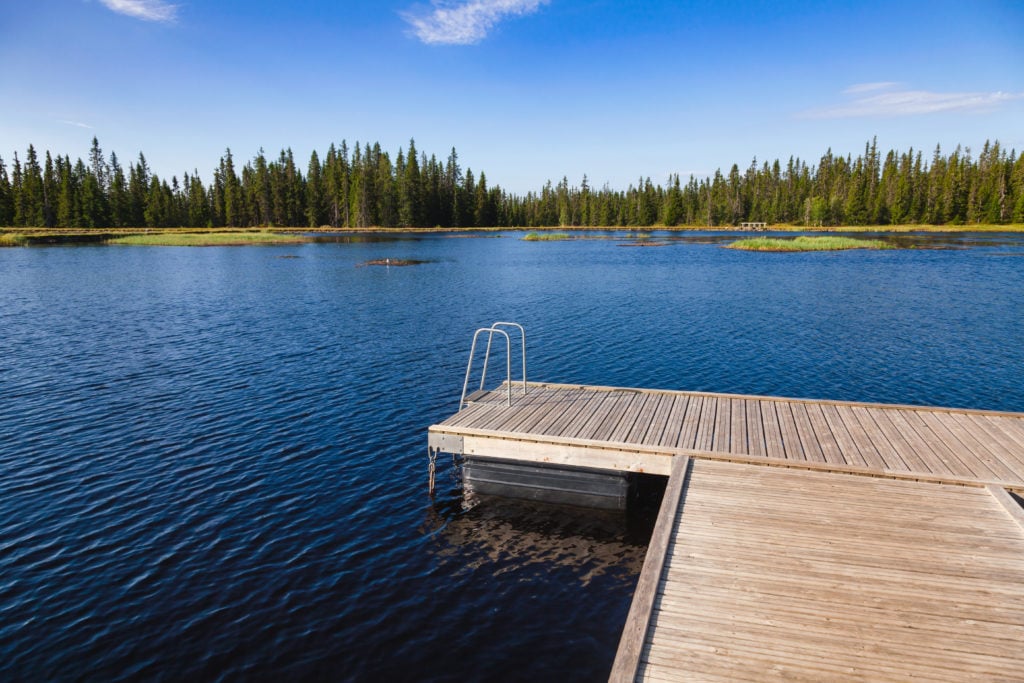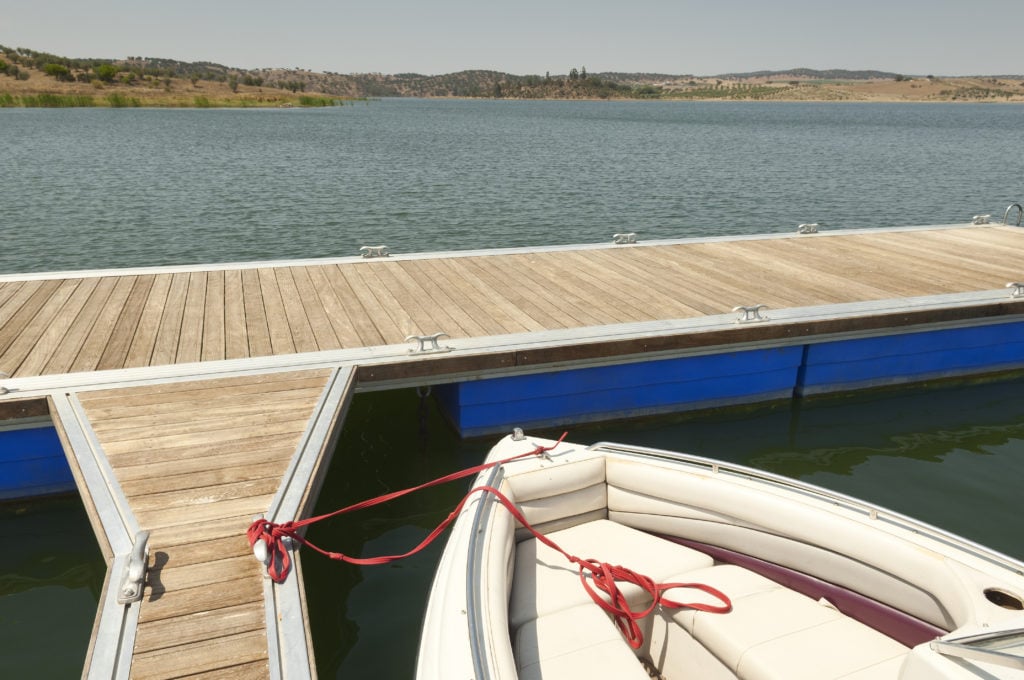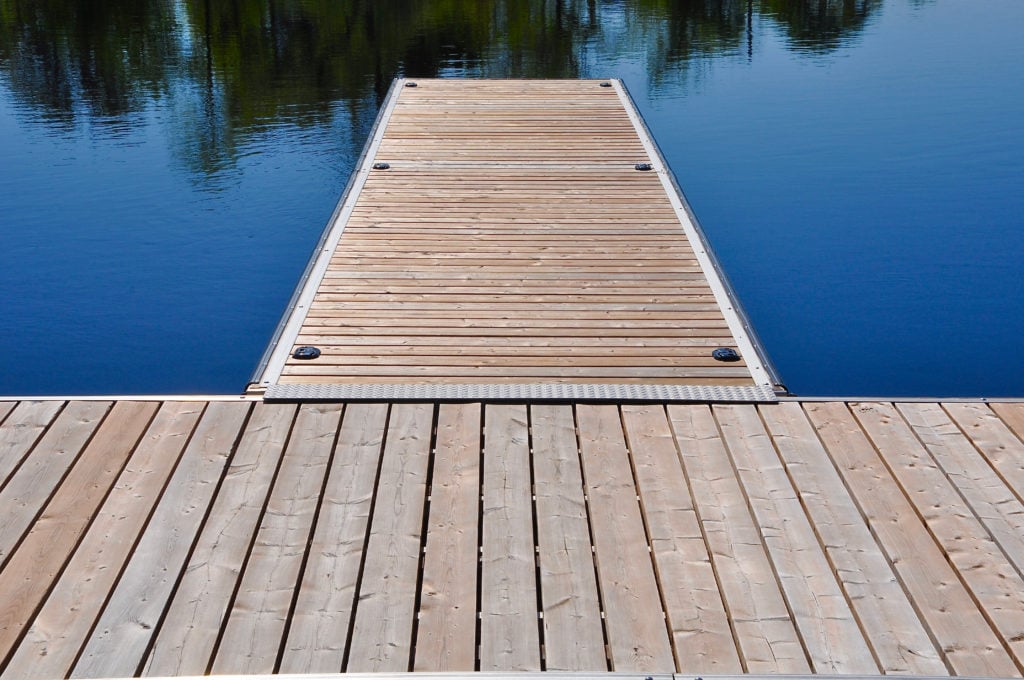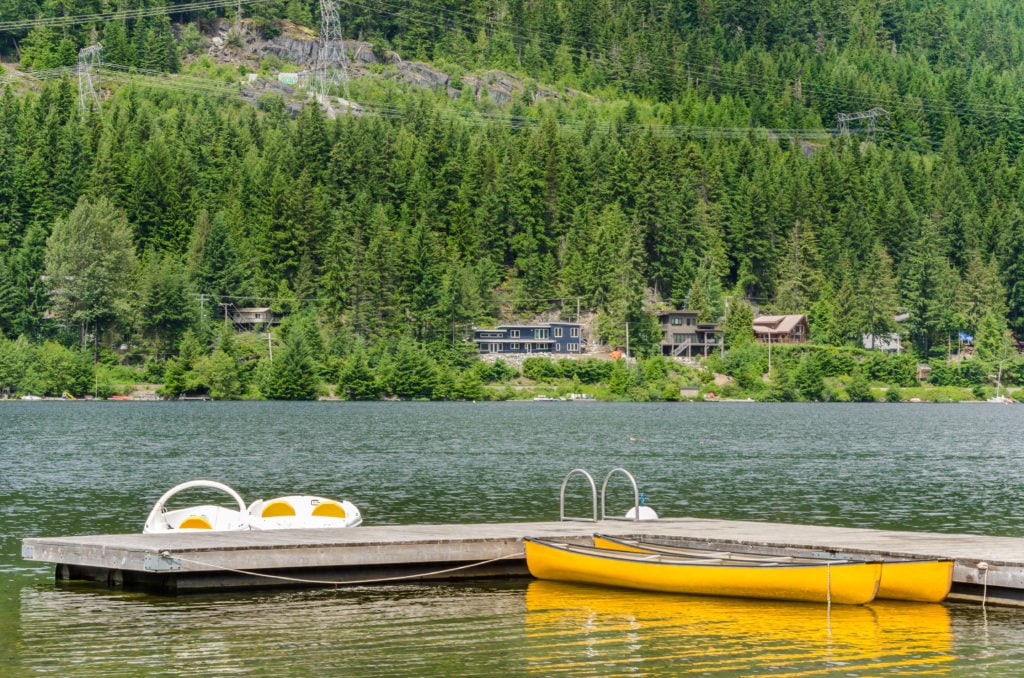So, you have the perfect waterfront property and the perfect boat, but you’re missing one thing to complete the trifecta. What could possibly be missing that would take this scenario from simply living the dream to utter bliss? A floating dock.
You might be wondering why you should build a floating dock over a stationary dock.
This is a common concern pondered by many boaters, but the answer is easy. A stationary dock is considered a permanent structure that sits on pilings and doesn’t move. A floating dock is a semi-permanent structure that floats and moves with the changing water levels to remain level with your boat.
Are you interested in building a floating dock to help protect your boat and take the fun of your waterfront property up a notch? Of course! Aren’t we always looking for ways to protect our boat and seek more water-related adventures? Here’s everything you need to build a floating dock.
What is a Floating Dock?

Before we dive into the materials needed to build a floating dock, let’s clarify what it is. A floating dock is a platform that is supported by air-tight, buoyant pontoons that allow the dock system to float on the water’s surface.
A floating dock is often connected to the shore or another permanent structure and it can be easily installed and removed as the seasons change. Not only are they connected to the shore or structure, but they’re also anchored to the bottom so they don’t float away in strong winds or currents.
What are the Benefits of a Floating Dock?

There may be more benefits to building and installing a floating dock than you initially imagine. Some of the primary benefits include:
- Versatility. Floating docks can be customized to meet changing needs. Whether you need to relocate them, store them during inclement weather, reposition, remove, or add on, floating docks makes modifying and enjoying your dock setup much easier.
- Adaptable. Floating docks are ideal in areas where water levels experience vast changes. When tides rise and fall, your floating dock will rise and fall with. The self-adjusting ability of a floating dock ensures safe and consistent access to your boat.
- Attractive. By building a floating dock, you enhance the appearance of your shoreline. It’s a nice finishing touch that is not only functional but easy on the eyes as well.
- Affordable. Installing a floating dock is easier and more affordable than a stationary dock. Generally, floating docks take less time to install and are often ready to use within a single day’s time.
- Expandable. Floating docks can be expanded whenever needed. Perhaps you acquire another boat or simply want a bigger dock, no worries. With a floating dock, you can add on sections as needed without disturbing the existing portion of your dock.
What You Need to Build a Floating Dock

Gather all your materials in advance to avoid delays during the building and installation phase. Make sure you invest in water-resistant hardware (such as stainless steel or aluminum) to minimize rust and corrosion over time.
Here is everything you need to build your own floating dock:
- Tape measure
- Pencil
- Socket ratchet
- Saw
- Drill
- Nail gun
- 5-10 pounds of nails
- Angles
- Inside corners
- Dock floats
- Stainless steel 3/8” x ½” lag bolts with washers
- Side stringers
- Cross stringers
- Ends stringers
- Float supports
- Decking boards
Depending upon how you design your dock, you may need more or fewer stringers, float supports, decking boards, or dock floats. Overton’s has a full selection of durable, marine-grade floating (and stationary) dock essentials from dock floats to cedar planks and everything in between to ensure you have the best materials to build the best floating dock possible.
A Few Factors to Consider When Building a Floating Dock

While building a floating dock is fairly straightforward and the benefits are abundant, there are a few factors to consider when embarking on your floating dock installation.
- Water Depth. Sure, floating docks can adjust to the rise and fall of water levels, but they perform best in bodies of water that have a reliable minimum depth. Avoid installing them in areas where the water levels drop so low that your dock could risk touching the ground.
- Intention and Performance. Keep in mind how you intend to use your dock to ensure it will perform and meet your needs as you hope. Floating docks are ideal for having easy access to your boat and are great as swimming platforms. However, they’re not the best solution in rough waters or high-traffic waterways.
- DIY Comfort Level. This is often a do-it-yourself project, but if you’re not comfortable with the task or want to ensure it’s done as accurately as possible, hiring a professional is always an option. There’s no shame in asking for help. There are professionals available who build floating docks regularly, so help is available if you need it.
There’s never a dull moment on the water and building a floating dock is one way to guarantee that your boat is safely docked for all the fun times ahead. Whether you’re using your floating dock for quick, easy access to your boat or you’re planning to build one as a jumping-off point for swimming and other water activities, you won’t regret knowing everything you need to build a floating dock!
Have you ever built a dock that floats before? Tell us the best parts of having one in the comments below!




